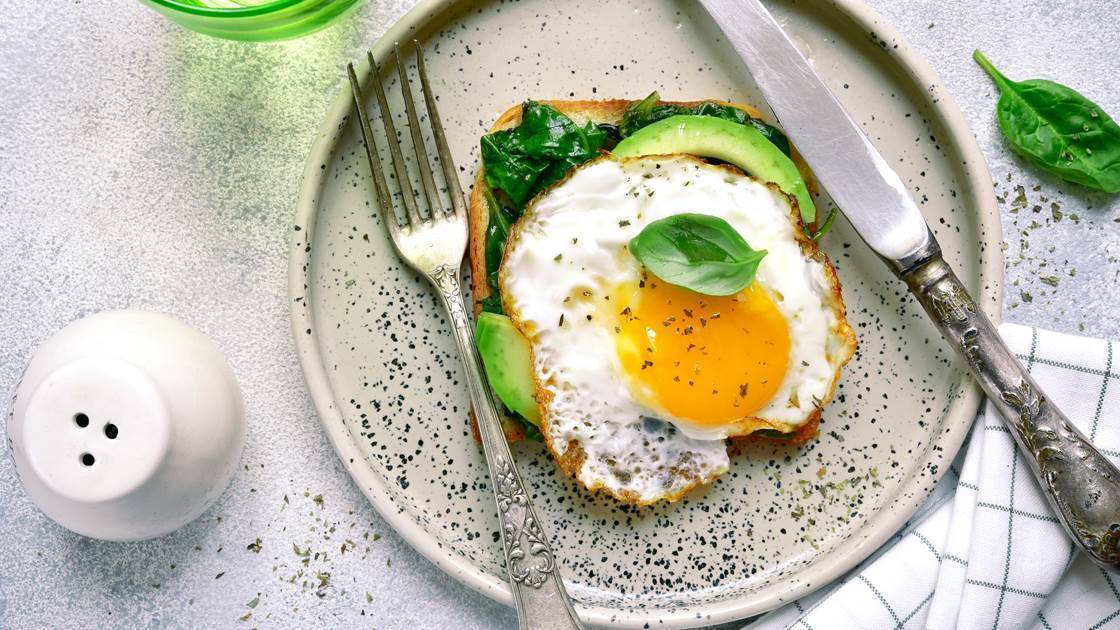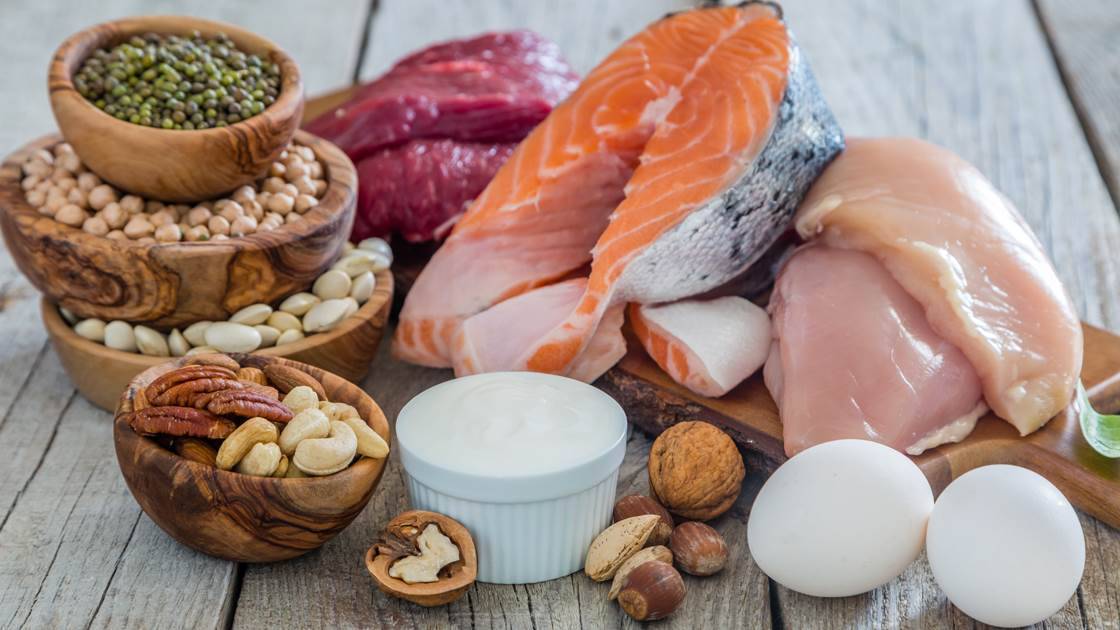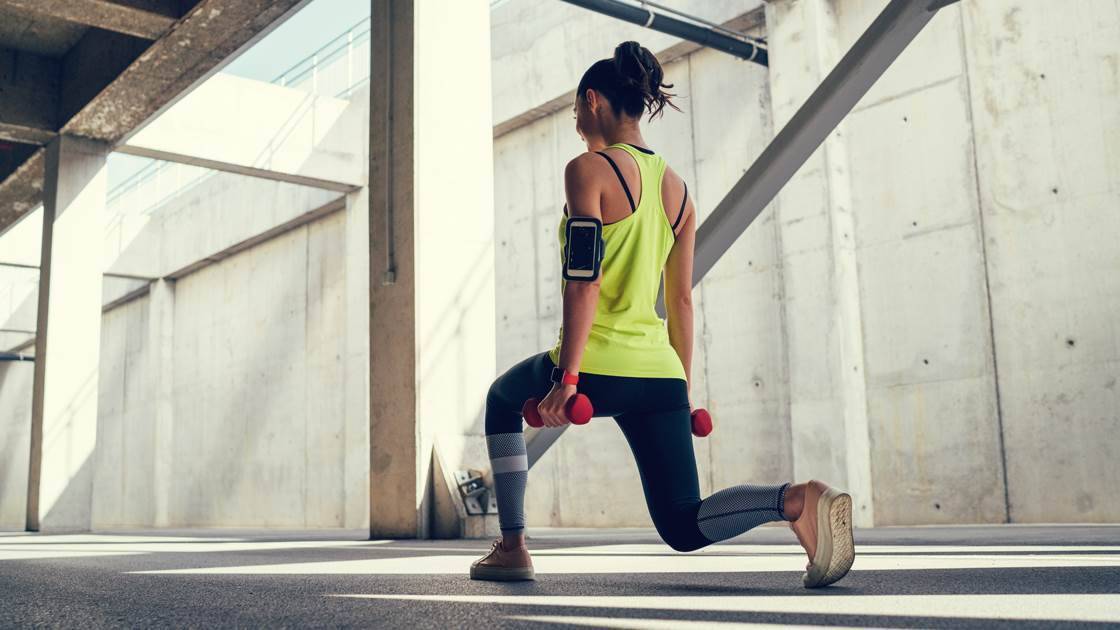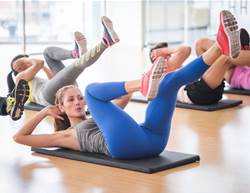If you feel like you can’t eat as much as you used to back in your 20s or 30s without your favourite pair of jeans getting just that tiny bit tighter, the truth is you’re probably not imagining it. Age-related weight gain is recognised as a genuine ‘thing’. One explanation is that from about the age of 30, we can start to lose muscle mass, a process that naturally ramps up after the age of 50 so that, without intervention, we lose one or 2 per cent of our muscle mass every single year.
What’s that got to do with it? Apart from the fact that muscle equals toned-looking limbs, it also burns a whole lot of kilojoules for fuel.
So, the more muscle mass you have – and can hang onto as you grow older – the higher your body’s metabolism will be, which means you’ll find it easier to keep weight off. In fact, thanks to how efficiently muscle ‘eats’ kilojoules, research suggests that as soon as you start to lose it, you’d need to shave at least 10 per cent off your daily kilojoule intake just to keep the scales static.
But there is another solution – and ironically, it’s living in your fridge. “The good news is that while sarcopenia, or age-related muscle loss, affects one in three Australians over the age of 60, it’s definitely not inevitable,” says accredited practising dietitian, Milly Smith. “Along with resistance training, making sure you’re eating enough protein is one of the key things you can do to help maintain your muscle mass. It works because protein contains the amino acids that muscle tissue is made up of, and which the body therefore needs to build muscle.”
Protein also stimulates the production of serum IGF-1, a hormone that’s central to muscle growth. Plus, protein’s useful for keeping your weight on an even keel for another reason, too. “Because it’s not the body’s preferred energy source, protein takes longer to break down than say, carbohydrate,” Smith explains. “That means it keeps us feeling fuller for longer, which can help with appetite control.”
Proof is a weight-loss study conducted at the University of Illinois, where people eating a higher-protein weight-loss diet lost 38 per cent more body fat than people eating a typical weight-loss diet.
But here’s the thing: while eating enough protein is a great place to start, you can do better. Our five-step metabolism-boosting plan will help you perfect your protein intake for maximum effect.





METABOLISM BOOSTER #1
Calculate how much protein you really need
Official guidelines say women should eat 0.75g of protein per kilogram of bodyweight every day, increasing to 0.94g of protein past the age of 70. Recently, though, experts have questioned whether that’s genuinely enough, particularly when you reach your 60s or if you’re trying to lose weight, a process that often causes muscle loss along with fat loss.
“The current recommendations for protein intake underestimate protein requirements during weight loss – the latest science suggests eating 1.2-1.6 grams per kilogram of bodyweight for optimal weight loss,” says CSIRO principal research scientist, Professor Manny Noakes.
When a group of postmenopausal women sticking to a weight-loss diet put that theory to the test for a 2016 study, those who ate 1.2g of protein per kilogram of their bodyweight experienced 45 per cent less muscle loss than women eating less protein.
And a study recently performed at the Australian Catholic University (ACU) also reinforces the ‘more protein is better’ theory, with results showing that eating twice the recommended daily amount of protein builds stronger muscles when combined with exercise.
The takeaway? For muscle health and weight maintenance, aim for at least 1.2g of protein per kilogram of bodyweight. For a 70kg woman, that means eating 84g of protein a day.
Now that might sound like a lot, but it’s not a difficult target to reach given that a 110g serve of fish, poultry or beef contains 28g of protein, a cup of cooked chickpeas contains around 16g, and there’s 8g of protein in a 170g serve of Greek yoghurt.
METABOLISM BOOSTER #2
Include at least 25g of protein in every meal (yep, even breakfast)
That’s the message to come out of a CSIRO report that was released at the beginning of 2018, which also found that Australian women only consume 11g of protein at breakfast, on average.
It’s an eating pattern that’s supported by the results of a US study. Researchers from the University of Texas discovered that people who spread their daily protein requirement out evenly across the day experience 25 per cent greater muscle-protein synthesis – the technical name for the process of building muscle mass – compared to people who eat the biggest chunk of their protein at dinner.
There’s another reason why eating protein with every meal makes sense, too. According to something called the Protein Leverage Hypothesis, developed by researchers at the University of Sydney’s Charles Perkins Centre, we ‘need’ a certain amount of protein to feel full. So, when you don’t include a protein-rich food at lunch, you’ll keep grazing on low-protein, carbohydrate- or fat-rich foods until you reach that protein ‘target’. The upshot? You’ll consume many more kilojoules than you really need, which spells weight gain.
“It’s not difficult to include a source of protein in every meal, it may just take a bit of a mindset shift and some planning,” Smith suggests. “Becoming familiar with protein-rich foods, and knowing which sources naturally ‘fit’ your morning meal – for example, eggs, avocado and yoghurt – is a great place to start.”
METABOLISM BOOSTER #3
Enjoy a variety of protein-rich food
Some foods – such as meat – might be protein powerhouses, delivering a big protein bang-for-buck ratio, but it’s wise to mix it up.
In fact, getting your protein solely from animal sources could actually accelerate muscle loss, according to a review by the International Osteoporosis Foundation Nutrition Working Group, because meats are acid-producing
foods that can stunt that all important muscle-protein synthesis.
Luckily the fix is simple: fruit and vegies are alkalising, which helps offset some of the potentially muscle-robbing effects of meat-heavy meals.
“Eating a variety of protein-rich foods is also the key to a healthy, balanced diet,” Smith says.
That means including nuts, seeds and soy products, as well as protein-rich vegetables such as legumes. Plus, legumes contain fibres that act as prebiotics, stimulating the growth or activity of good bacteria in the large intestine. That’s handy because research suggests maintaining a healthy gut microbiome may go some way towards reducing the impact of ‘anabolic resistance’, where we require more and more dietary protein to trigger muscle-protein synthesis as we grow older.
METABOLISM BOOSTER #4
Supercharge your strength-training sessions
On its own, strength training at least twice a week is good for building muscle. But as the ACU study that was performed last year confirmed, when you pair it with plenty of protein, you’ll get even better results.
To kick things up another notch, think about the timing of your meals. Some research has shown that saving your protein-rich meal until after you’ve worked out, instead of eating it beforehand, improves post-meal muscle-protein synthesis. When exercise and eating is done in that order, a larger volume of the amino acids that protein-rich foods contain become available for muscle building.
As for which exact foods work best in combination with exercise to increase muscle mass, the researchers responsible for the ACU study say it’s ones that are naturally rich in a specific amino acid called leucine, which are most effective. Leucine-loaded options include milk, cheese, beef, tuna, chicken, peanuts, soybeans and eggs.
METABOLISM BOOSTER #5
Eat a protein-based bedtime snack
Two separate studies show that late-night snacking helps rather than hinders metabolism and muscle health without causing fat gain – as long as the snack you eat contains a decent amount of protein.
It’s a particularly effective strategy to use on your ‘exercise days’, with one of the studies showing it improves overnight muscle-protein synthesis post-exercise, by 22 per cent.
To make it work, plan to eat your metabolism- and muscle-building snack about 30 minutes before bedtime and choose a food that contains around 30g of protein. Low-fat cottage cheese is an ideal option.
“Like all protein-rich foods, the great thing about cottage cheese is that it delivers more than just protein,” says Smith. “It’s also a valuable source of bone-strengthening calcium.
“Likewise, meat provides iron and zinc as well as protein; nuts, seeds and vegetables contain dietary fibre; and fish and seafood is packed full of the heart-healthy long-chain omega-3 fatty acids.”
Milk is another good choice before going to sleep, with about 9g protein per cup (250ml).
An added bonus is that it might even help you nod off, as milk contains tryptophan (a precursor to serotonin – a brain chemical that induces sleep). You’ll then be ready to go the following day!








.jpg&h=193&w=250&c=1&s=1)

